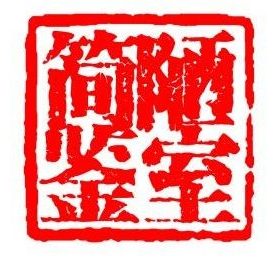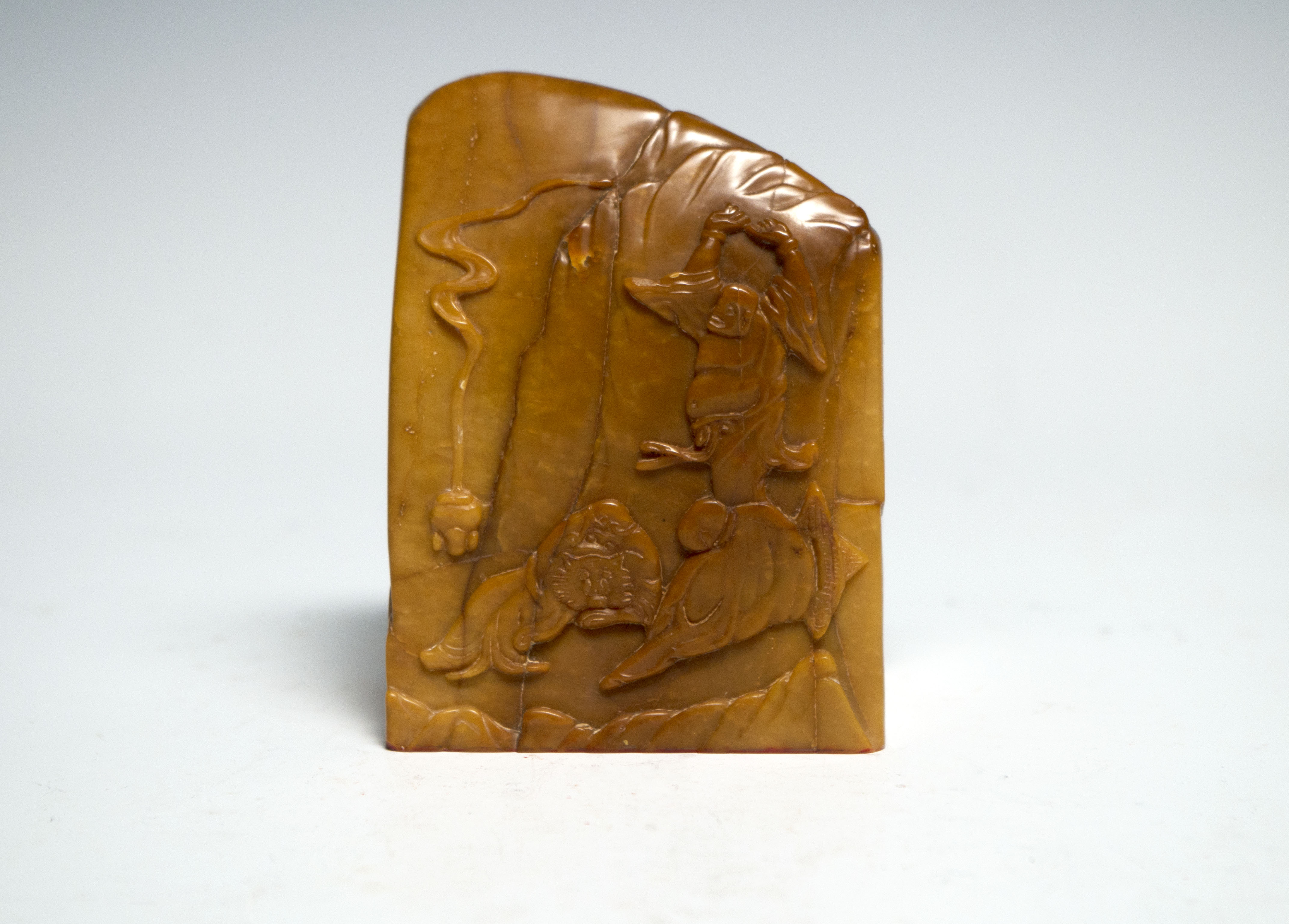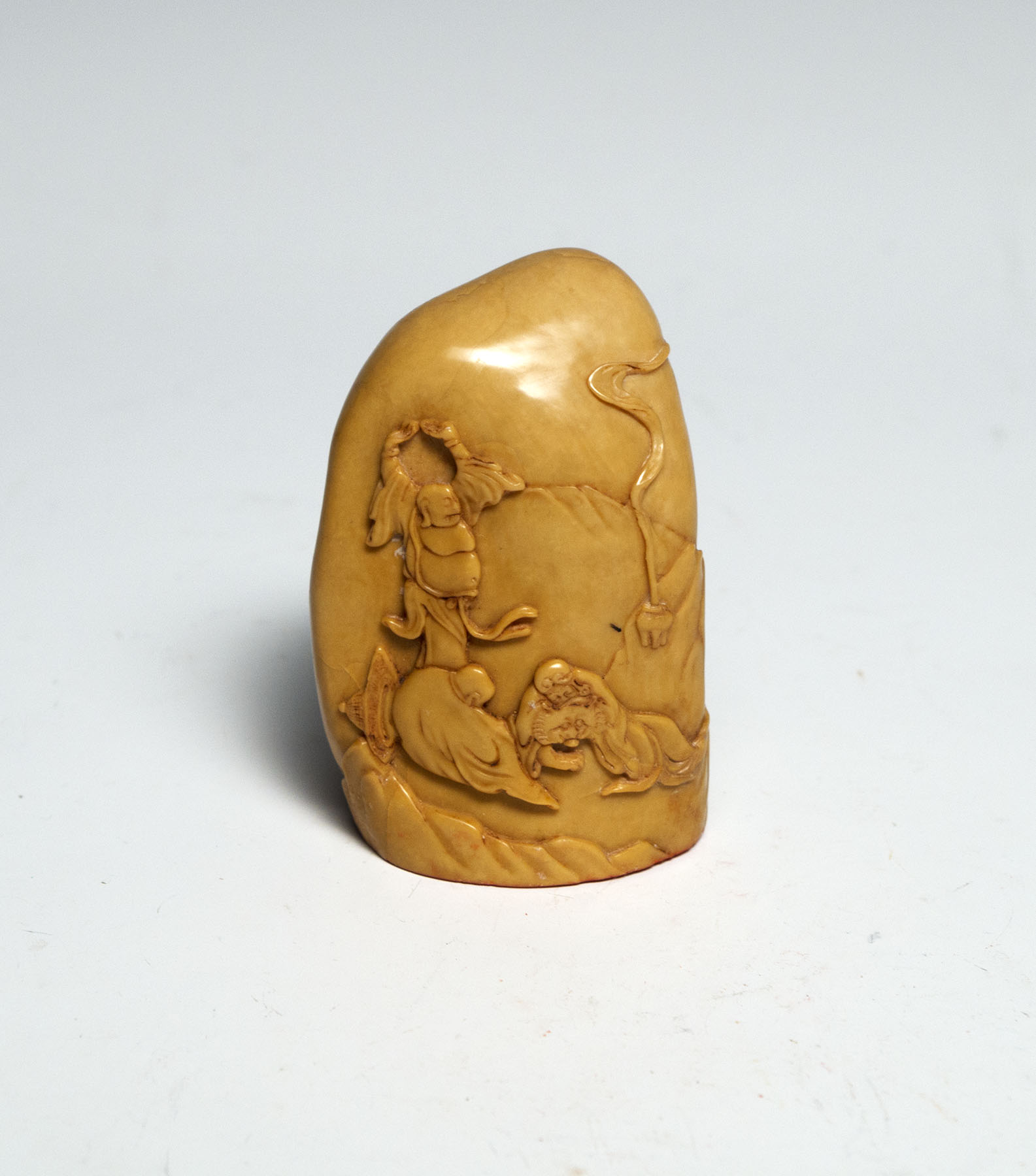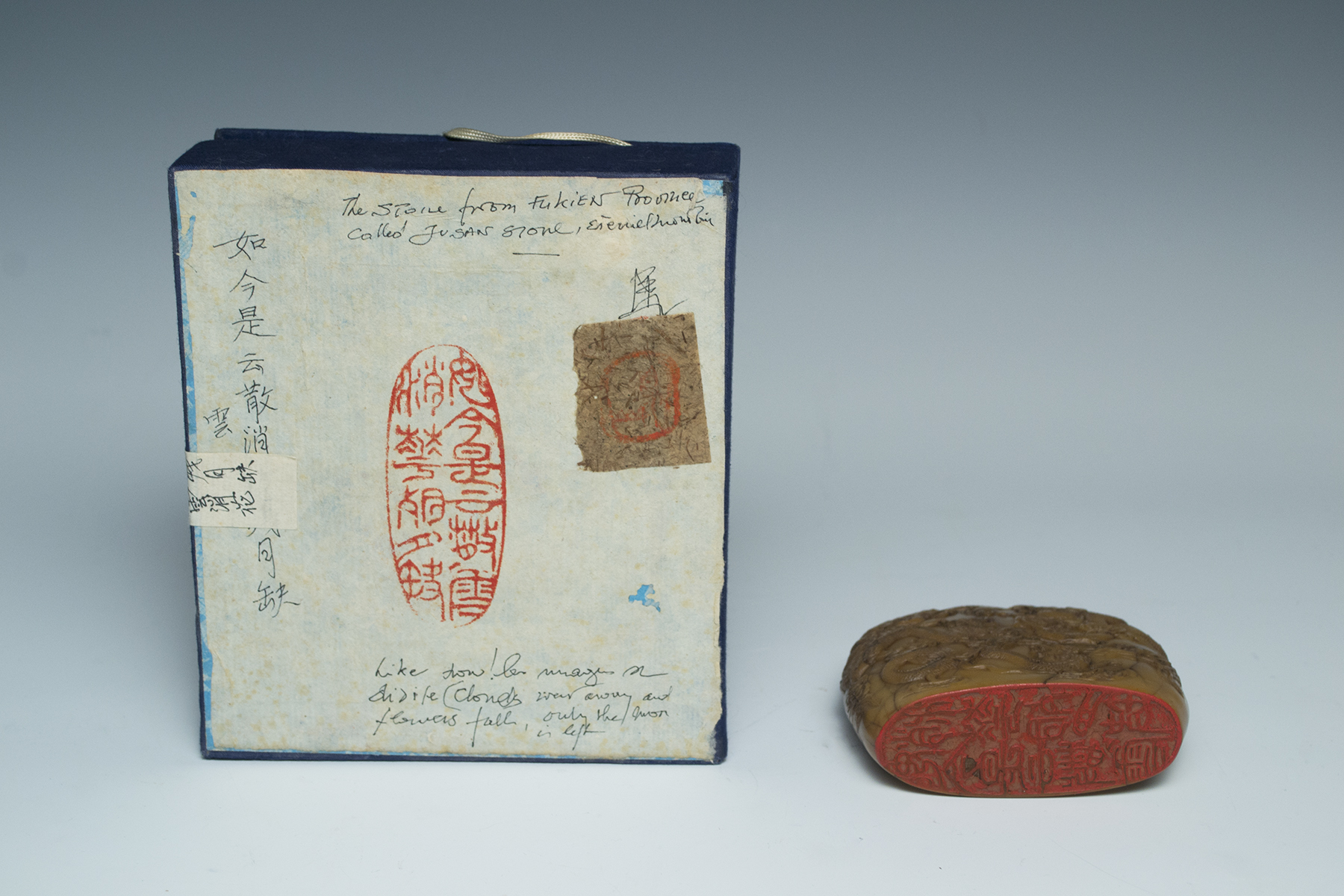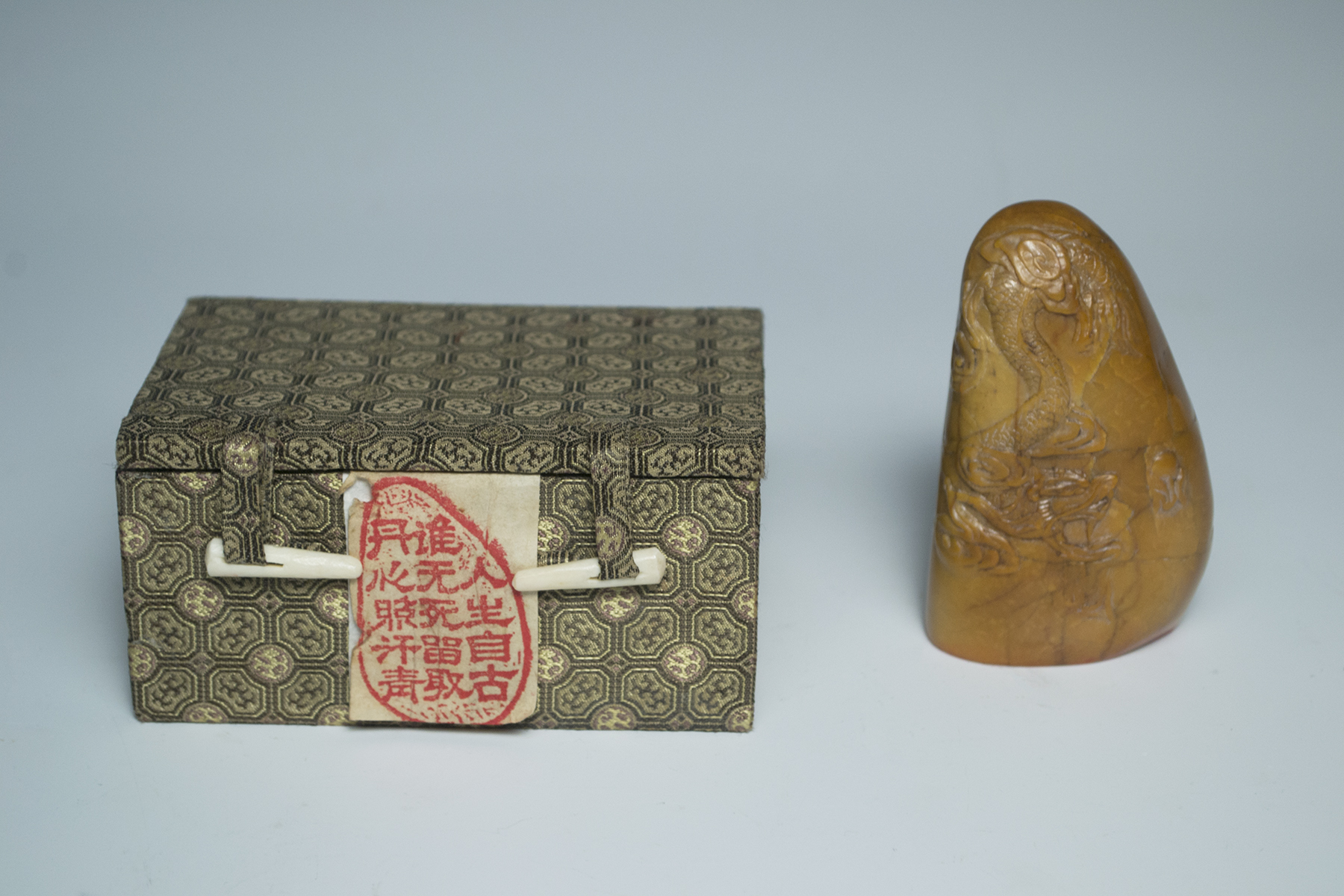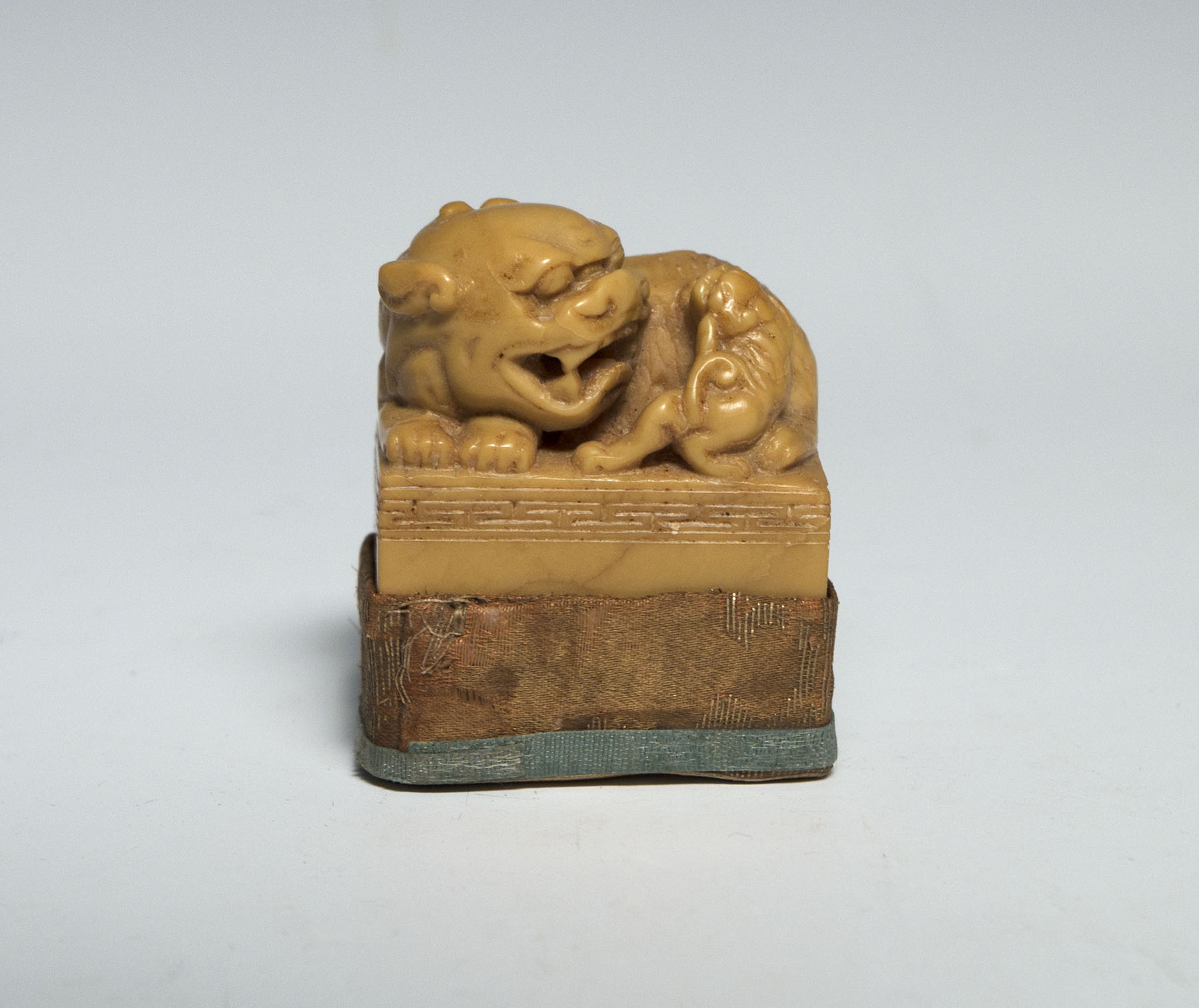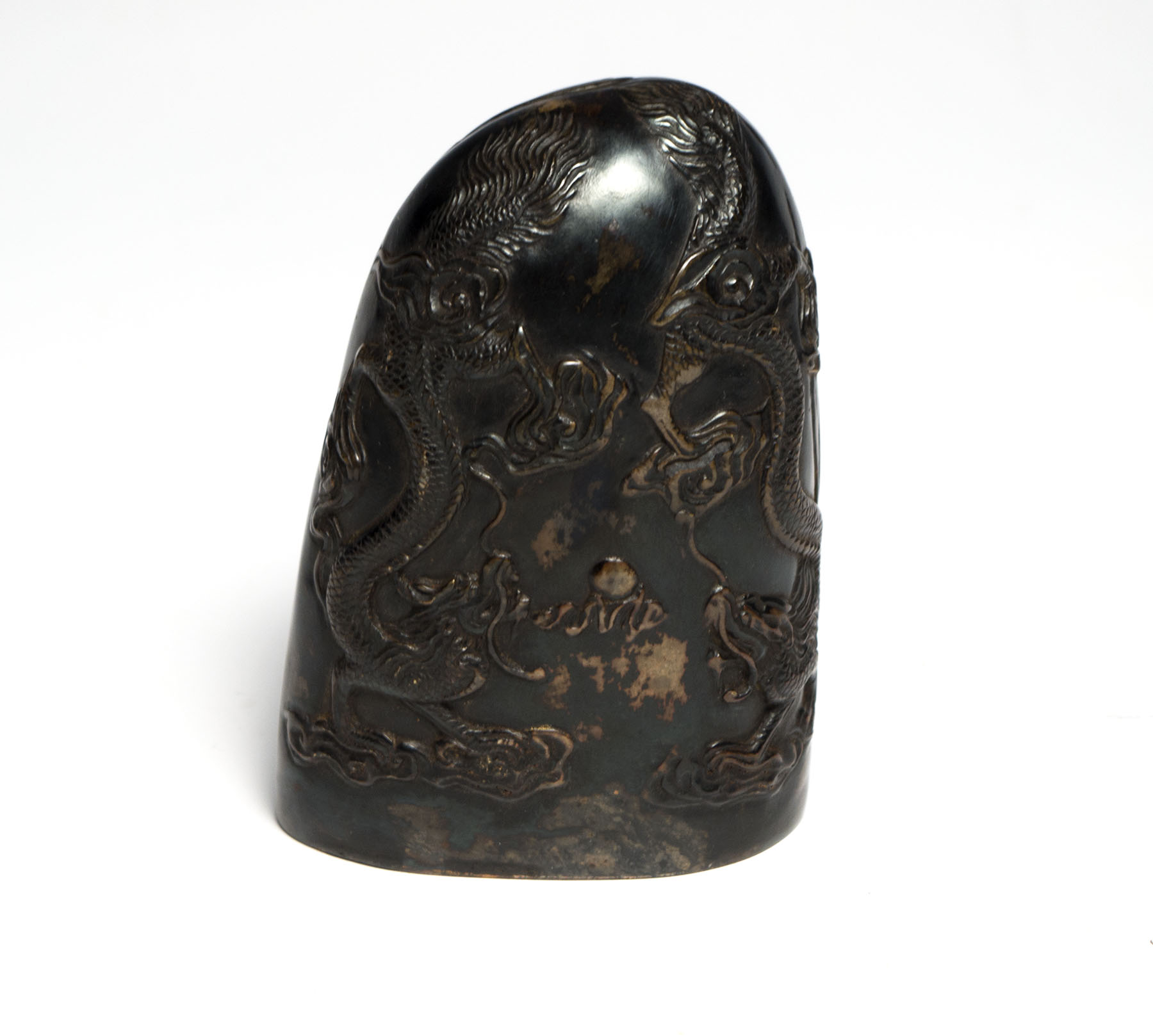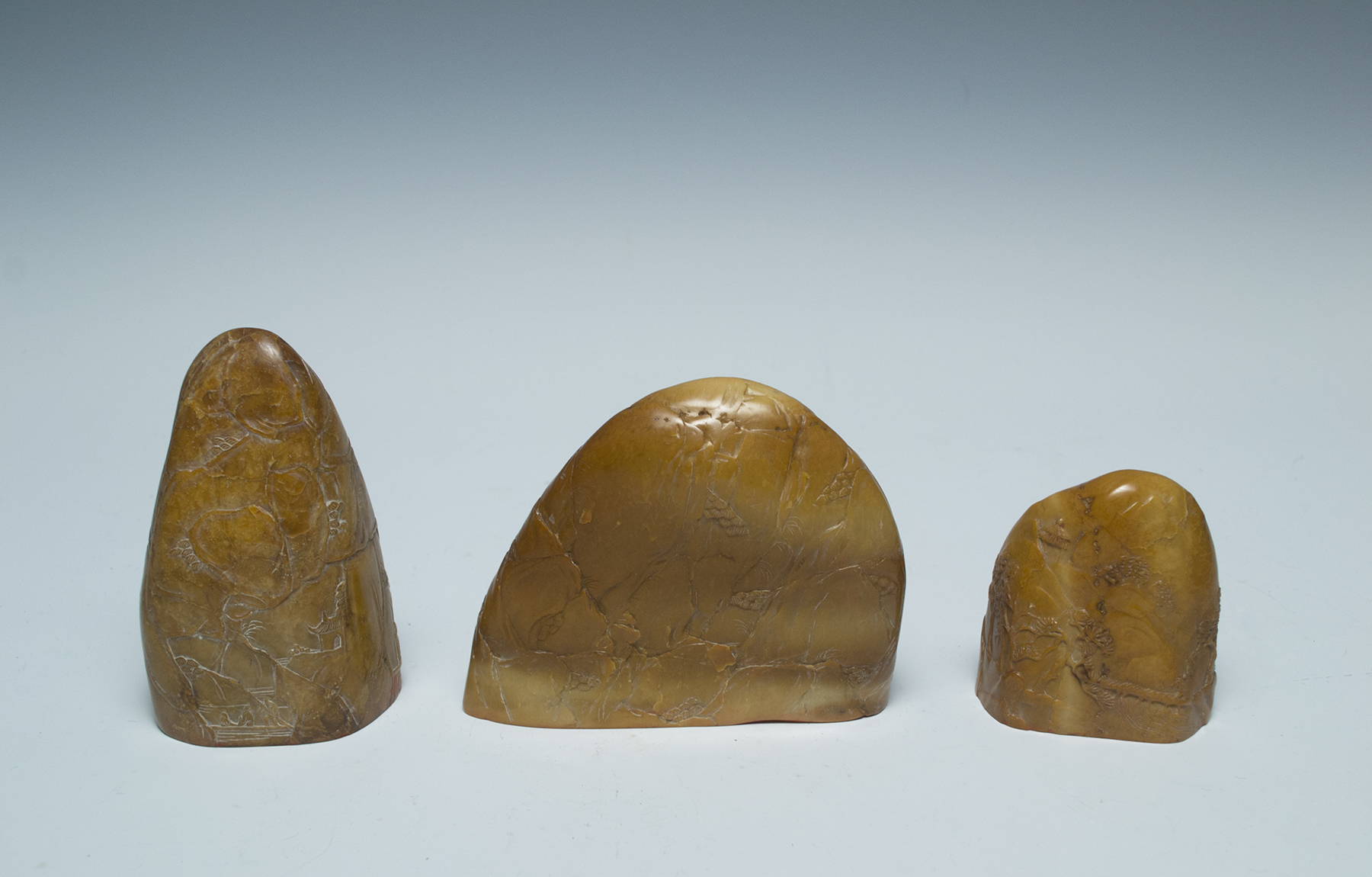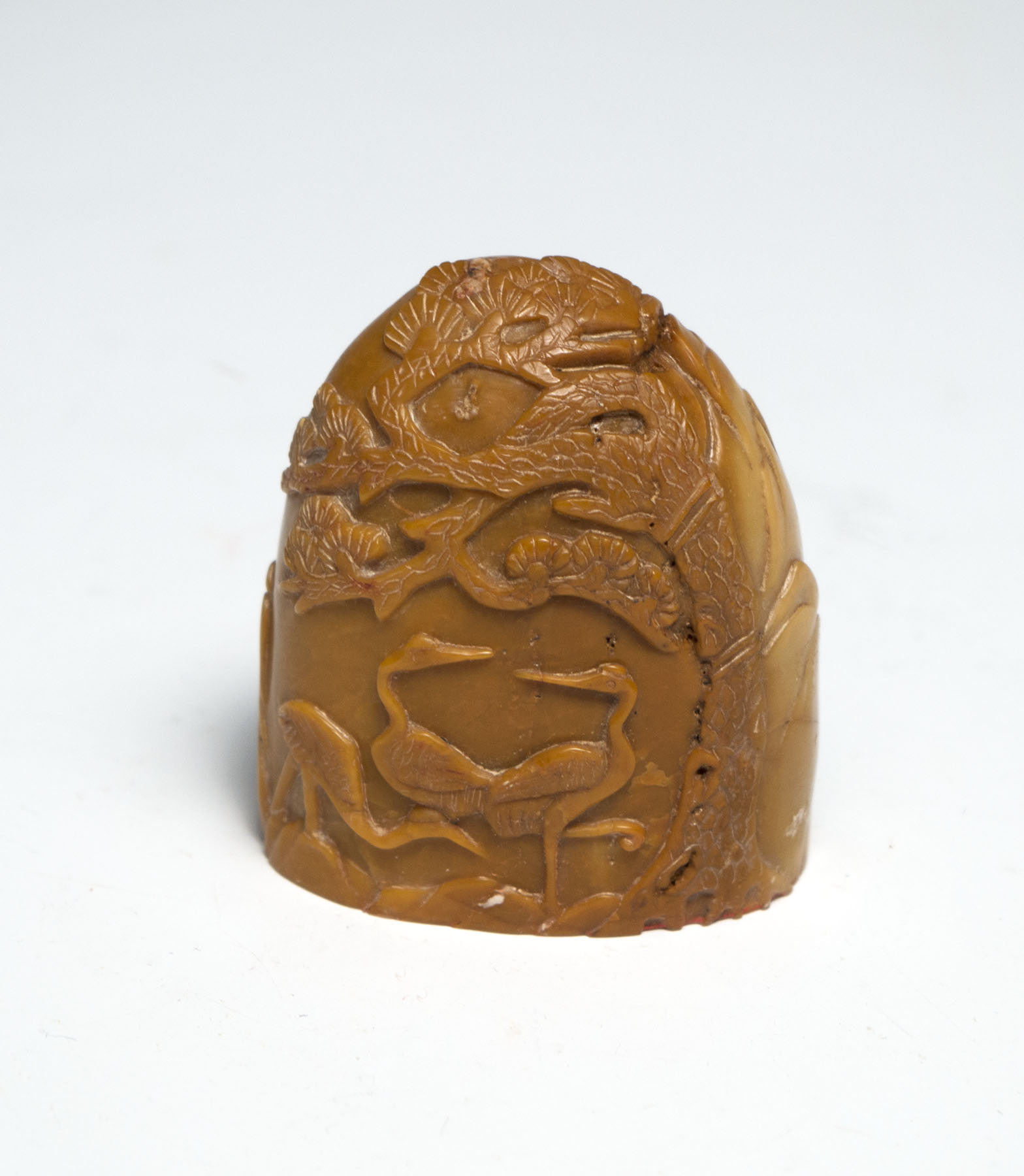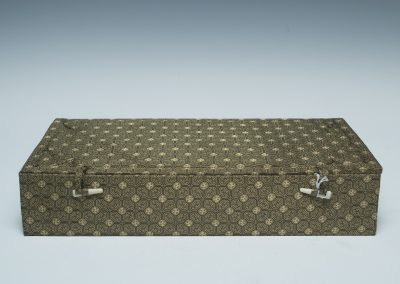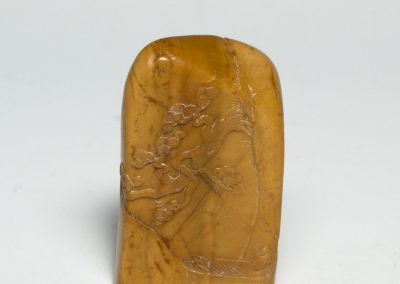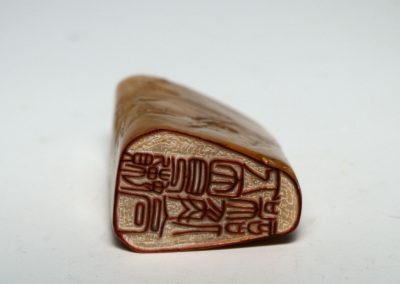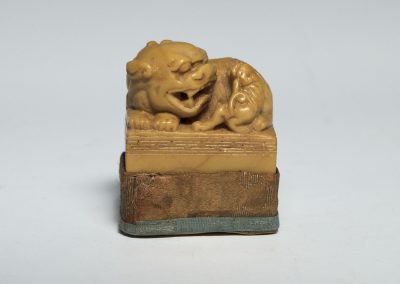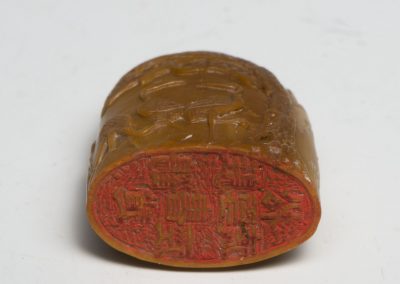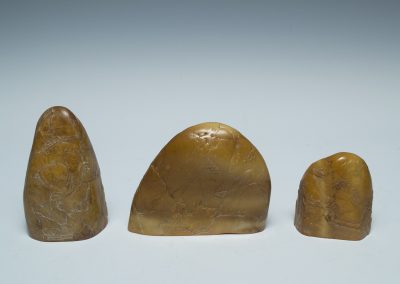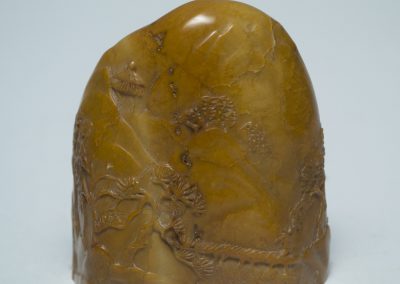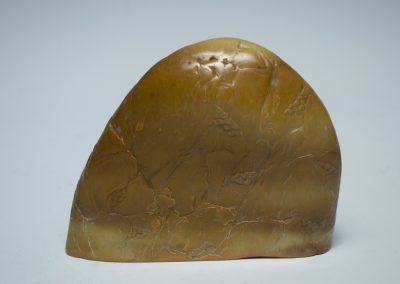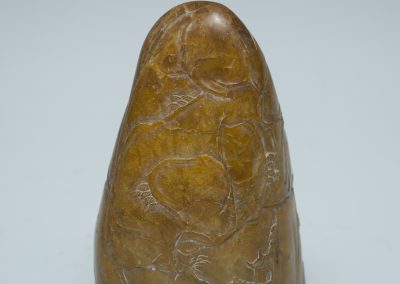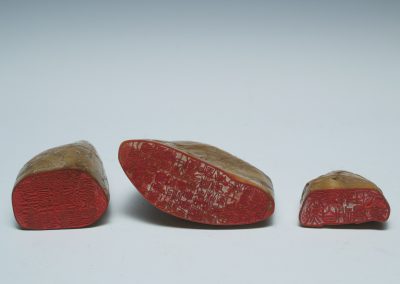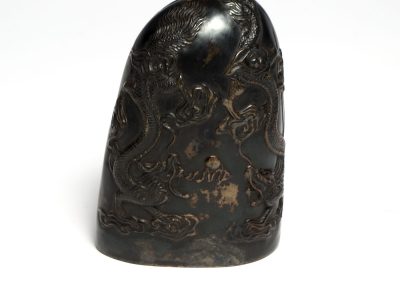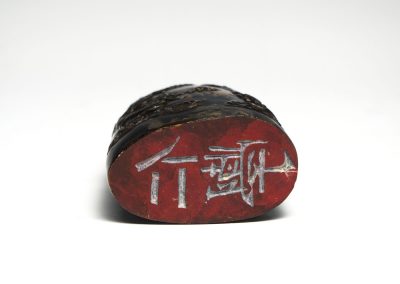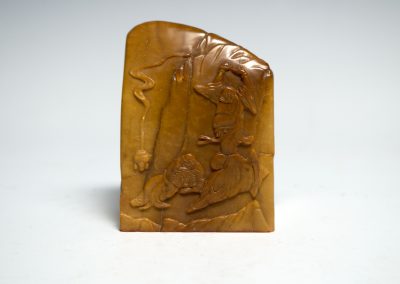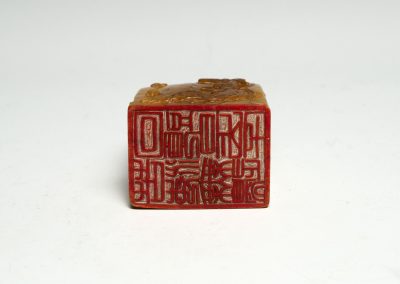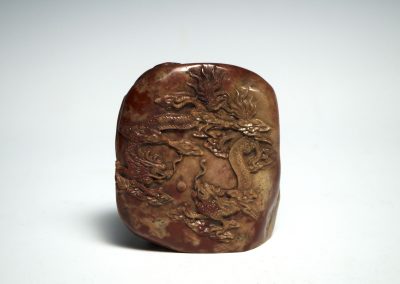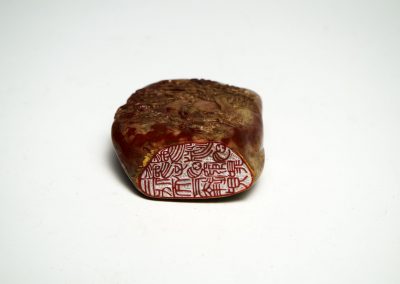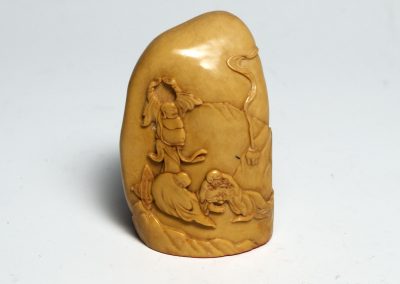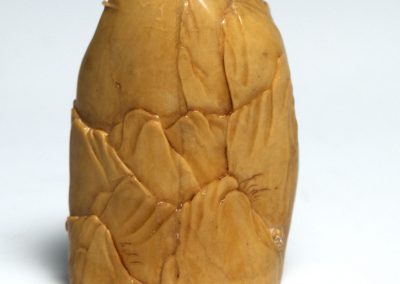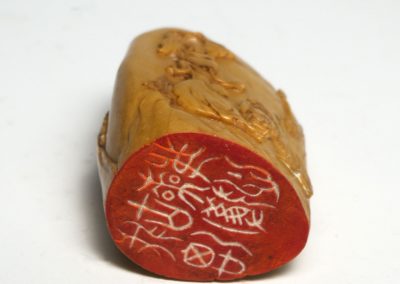Seals
Seals represent a crucial component in the production of Chinese art. The history of seals can be traced back to the Shang dynasty (1600 – 1046 BCE). Before the Song and Yuan dynasties (11-14 th centuries), the materials used were mostly hard materials such as metals, jades, ivory, bamboo, and hardwoods. Stones became increasingly popular after the Yuan Period due to their fine and smooth textures, beautiful colors, natural patterns and suitable hardness for carving. The four types of stone most popular in making seals are Qingtian (青田石), Changhua (昌化石), Balin (巴林石) and Shoushan (寿山石). Originally, seals served as proof of power or permission, in lieu of official signatures. Coupled with an increasing popularity among literati (educated elite) in the Ming and Qing Dynasties (15 th -19 th centuries), seals began to exhibit different aesthetic functions, reflecting a variety of personal artistic sentiments and ideals. The aesthetic value of a seal can be determined from the appreciation of two aspects of the seal, the body and the content. The type and quality of the stone, the decorations carved on the surface, and the form and shape of the seal are all important factors for evaluating the seal’s body. As for the content on the bottom, it can be evaluated on its meaning, the calligraphy, the format of the letters and the skill of the carving. Various types of seals on display can be found in this section. Some have names of individuals but most contain some type of poetic content.
If you would like to listen rather than read, please click below.
